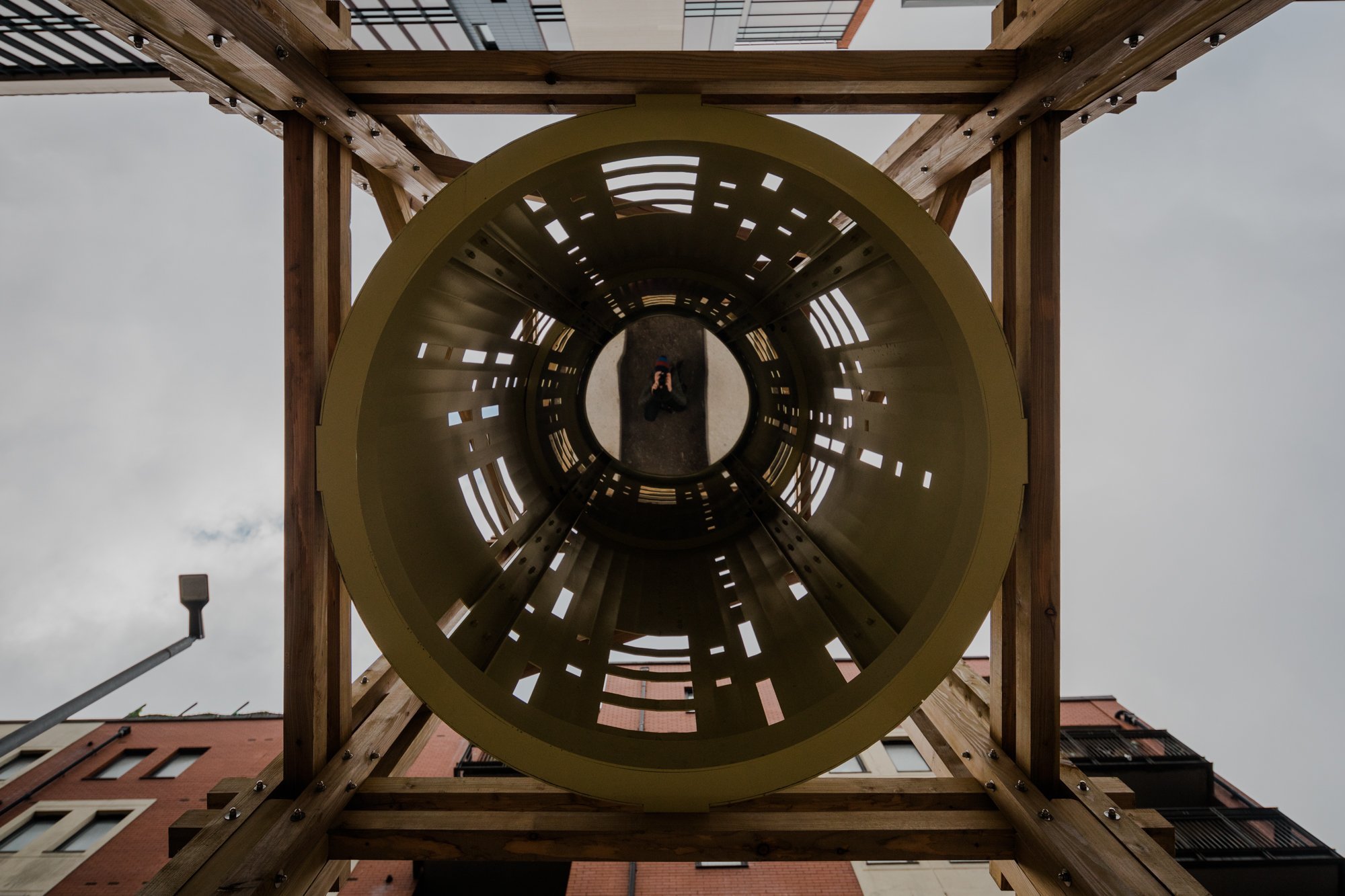
Adelaide Street Project: Experimental Public Realm
Replacing a lane of traffic with an urban garden:
The impact of the Adelaide Street project in Northern Ireland cannot be underestimated. In NI, the Department for Infrastructure is the key decision-maker concerning the public space of our streets (unlike many parts of the UK where local authorities have more control) and the movement towards a pedestrian-friendly city has been notoriously slow. Removing a lane of vehicular traffic and replacing that with incidental play, planting and age-friendly public space here was unprecedented: a brave and inspired act of collaboration between the DfI, Belfast City Council and the design team. The process has required people across organisations to step out of their comfort zone in order to set a new example for people-centred placemaking.
-
Clients and Collaborators: Department for Infrastructure & Belfast City Council.
Collaborator: MMAS
-
Architects Journal Small Projects Award: Winner
MacEwan Awards: Shortlist
Pineapple Awards: Shortlist
Adelaide Street is part of a ladder of roads leading up to Belfast’s city centre: one of the only parts of the city planned in a rigid grid pattern. Originally home to warehouse buildings and linen-ware factories, the already mean pavement area had been eaten away by further parking spaces. This, combined with two lanes of traffic moving in the same direction, felt inappropriate for a street now lined with apartments and offices. There is an ambition to have larger numbers of people move back to the underpopulated city centre of Belfast, but presently inner-city communities have very few green spaces or play areas. Through conversations with Adelaide Street’s residents, it was found that many of them had no outdoor space associated with their apartment buildings. The team saw an opportunity to reduce two lanes of traffic to one and create a half kilometre of urban garden. This also created an improved environment for the many office workers populating the street each day. To create shelter and spark imagination, totemic lanterns, powered with solar energy, reference the area’s linen heritage and create playful glowing patterns on dark evenings.
Despite this being a temporary scheme, the team took an approach to create a demountable, reusable installation to reduce waste and to justify quality and craftsmanship. Using materials such as local larch grown in County Tyrone and polished concrete, close collaboration with Northern Irish manufacturers led to the creation of a public realm environment that has appropriate gravity and articulation for a city-centre public space: qualities that can often be lacking from perceived temporary, tactical urbanism. Perhaps because of the timing of the project coming out of lockdowns, and the fact that the entire construction team was working to bring their home city back to life, there was an incredible level of commitment to the quality of this project, underscored through the Council’s application for further funding in order to line the entire street with diverse, year-round planting that transforms this previously cold and grey vehicular route.
Image Above: Extending and enriching pedestrian space




Impact
Above: Journal Article about the award winning project.
Architects Journal Small Projects Overall Winner: the Adelaide Street Project won the presetigious AJ award out of over 200 entries.
A wide range of stakeholders were engaged in the project to co-design a brave, playful and innovative approach to creating family-friendly inner city space, whilst reallocating parking to reduce the impact of traffic on city centre neighbourhoods. 1400m2 of additional public space was converted from car use in a cost effective way.
Using temporary and demountable architecture to test urban change:
This project is a live urban trial, which grapples with many issues the city will be dealing with over the next decade as it tries to meet its climate goals. At the time DfI had never participated in a scheme like this before and the delivery and partnering to make it happen have been outstanding. This project has provided significant learning and set a standard for ambition in other projects across the city and beyond as communities and businesses try to improve the quality of the places in which they live and work. Recognising the innovative approach, the project has won several awards including the overall winner of the 2023 Architects Journal ‘Small Projects Award’. The project has unlocked a deeper conversation about how meaningful changes can be physically tested through demountable architecture as a form of live engagement and builds a conversation about what the future streets of Belfast might look like.
Process
Partnering
Adelaide Street required collaboration between Belfast City Council and the Department for Infrastructure, requiring tenacity and bravery from all partners to step into new ways of working together. The project was delivered under two contracts, utilising off-site construction for most of the demountable elements of construction.
Developing a demountable system of construction suitable for a Conservation Area
The team worked hard to perfect connection details that allow the project to be taken apart and reassembled in another location: this includes a new type of curb design in order to enable a demountable pavement extension appropriate for a Conservation Area.
Biodiversity and Environment
The largest environmental impact of this project is the removal of an unnecessary lane of traffic in the city centre, demonstrating that this can be done with positive consequences. On top of this, the use of Northern Irish larch significantly reduces the embodied carbon of the project. BCC’s planting team designed year-round greenery able to thrive in areas that do not receive many hours of sunlight, and this has diversified wildlife on the street, including a new population of hawk moths.
















